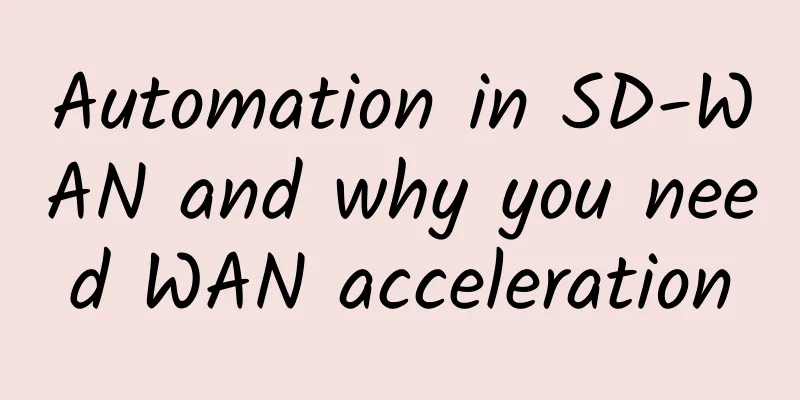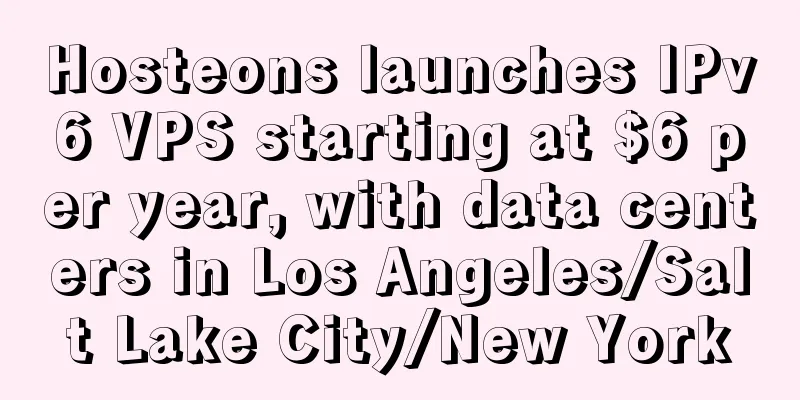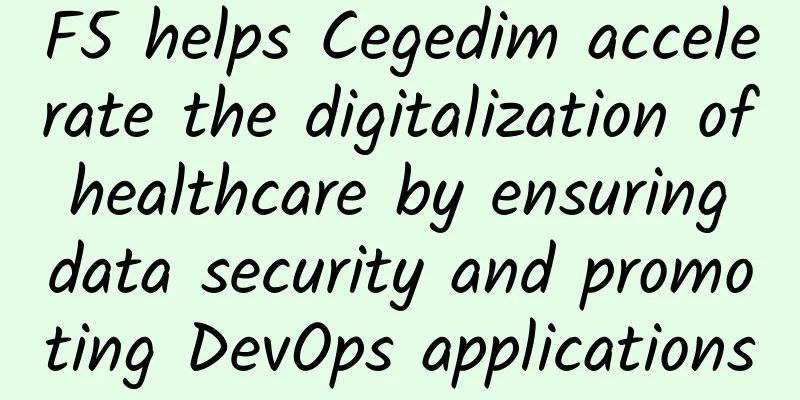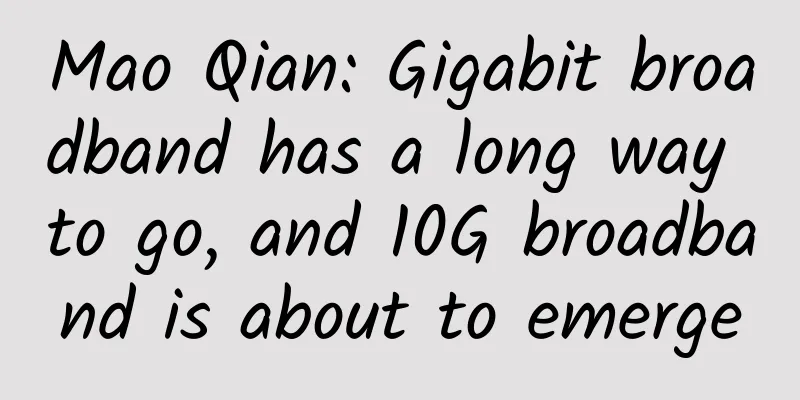"2021 Application Strategy Status" released, F5 continues to build aware, controllable, and on-demand applications
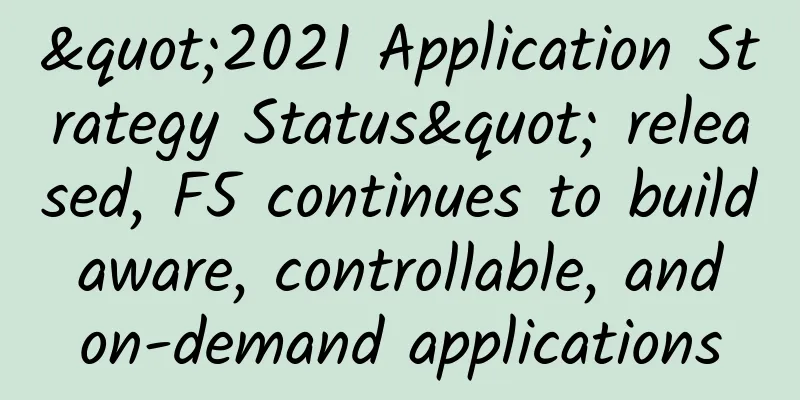
|
[51CTO.com original article] In the past year, affected by factors such as the epidemic, enterprises have significantly accelerated the pace of digital transformation. As face-to-face communication is limited, applications and the digital experience they bring have become a symbol of the survival and development capabilities of enterprises. In a year of rapid development of digital transformation, what are the characteristics of the current status of enterprise application strategies? Several key indicators in the "2021 Application Strategy Status" recently released by F5 reveal this trend: 1. Promote continuous modernization of applications and architecture. Chen Liang, technical director of F5 China's financial business unit and deputy general manager of the security business unit, gave an in-depth interpretation of this.
Chen Liang, Technical Director of F5 China's Financial Division and Deputy General Manager of the Security Division Drive continuous modernization of applications and architecture With the rapid expansion of digital transformation, more technologies are needed to support business development, online business, and process reshaping. The growth of AI-assisted business has tripled. In last year's report, we can see that there are three stages in enterprise digital transformation: the automation of tasks, the expansion of digitalization, and the use of AI technology to assist business growth. The threefold growth shows that many customers have basically completed the first two stages and are entering the third stage. AI intelligent customer service, smart investment advisors, etc. are all using AI services to provide a richer range of business types. Among the means and methods of supporting and implementing modern applications, customers are more inclined to choose simple and convenient ones, such as using APIs for business output and business calls. For customers, this allows them to output their service capabilities in the form of API interfaces, charge based on the number of API requests and the number of visits, and use it as a form of business output. At the same time, API interfaces can also be used as a way for enterprises to obtain more service capabilities from third parties. Of course, APIs also bring security vulnerabilities. While enjoying the convenience brought by APIs and modern applications, customers also pay more attention to security. Multi-cloud, SaaS deployment, and accelerated development of edge computing With the increasing number of modern applications, the complexity of architecture management has also increased. It is impossible for an enterprise to completely reconstruct the original traditional architecture. Instead, it has to operate and maintain the traditional architecture and modern application architecture at the same time to support the business. For customers, management costs, management risks, and security risks are also increasing. Therefore, enterprises will use multiple architectures in the process of accelerating cloudification. Some are based on public cloud deployment, some are based on SaaS, and some are hosted deployment and local deployment. How to ensure that applications can run quickly, safely, and stably with such complex and diverse IT architectures, and how to ensure customer access experience are issues that IT managers attach great importance to. At the same time, edge computing has received more and more attention with the vigorous development of IoT and 5G, and more corporate customers in the medical, education, automotive, and manufacturing industries are using IoT technology to obtain or provide corresponding services. Therefore, respondents regard secure access service edge (SASE) as a key strategic trend, with 56% of respondents considering it as the primary trend. The Importance of Telemetry Today, enterprises have no shortage of data, but they lack insights. The methods of data collection and data analysis restrict customers' ability to extract and gain insights from data. Especially in the process of modernizing applications, calls between applications are becoming more and more frequent, and at the same time, a large amount of data is extracted from the edge, so customers are more concerned about using telemetry technology to improve their insight capabilities. The interviewed companies said that after traditional IT centers have more telemetry technology, they can help data centers transform from traditional operation and maintenance centers and cost centers to business measurement centers and assessment centers, and pay more attention to business development. Application strategy status guides F5's development direction This year's report shows that AI technology can assist business development and achieve automation. However, when faced with challenges, customers still hope to change the infrastructure as code. Code the devices of each data source in the data channel, and change the strategy through code and API interface automation. Only in this way can customers use AI to assist business to improve the level of automation. At the same time, when faced with challenges in tools and talents, customers hope to use multi-cloud architecture to reduce dependence on tools in different environments, as well as the gap in automation management caused by the complexity of different manufacturers or different types of products. These current situations coincide with the general direction of F5's current promotion of perceptual, controllable, and on-demand applications. In F5's overall architecture, from the release and launch of a code to user requests, F5 provides a very rich range of application security and application delivery technologies. Whether the customer is in a traditional center or a virtualized platform, or in a container cloud, public cloud, or even a SaaS service or edge computing environment, F5's application security and application delivery technologies can provide customers with a unified security strategy, delivery level, service quality, and customer access experience. Every year, the user strategy report will provide some guidance for F5's future development. This year's report advocates the use of APIs, the use of cloud native, the transformation of modern applications, security risks, and multi-cloud and edge computing, which are F5's focus for some time to come. At the same time, this year's overall report is very consistent with F5's current concept of perceived controllable and on-demand applications. F5 hopes to help customers deliver applications faster in the entire data channel through the overall concept, provide more insight, feel and perceive the customer's access experience and application risk threats, perceive the quality of application operation, and provide dynamic adjustment of strategies, ultimately helping customers go faster and more steadily on the road of digital transformation! [51CTO original article, please indicate the original author and source as 51CTO.com when reprinting on partner sites] |
Recommend
Huawei: 5.5G is the only way for 5G network to upgrade and evolve
On March 2, MWC 2023 was held in Barcelona, Spa...
Interpretation of China's first LTE IoT multi-mode field test: Industry chain collaboration resolves the long-tail fragmentation problem
Recently, Qualcomm has cooperated with China Mobi...
Graphical explanation | A brief history of what is HTTP
[[344212]] This article is reprinted from the WeC...
China's new breakthrough in optical communication research: one optical fiber can support 13.5 billion people talking at the same time
[[182609]] The first 560Tb/s ultra-large capacity...
In the era of the Internet of Things, how will smart hardware affect our lives?
In recent years, the Internet of Things (IoT) has...
Fiberia.io: $2.9/month KVM-4GB/50GB/2TB/Netherlands data center
Fiberia.io is a new website, from the same compan...
WeChat tests voice progress bar function, netizens: finally it's here
The video progress bar was once added by Tencent ...
Huawei Software Development Cloud helps improve WeChat mini-program code quality
In the early morning of January 9, after more tha...
[11.11] Tencent Cloud 2C2G4M cloud server starts at only 50 yuan/year, 2C4G6M cloud server only 100 yuan/year
Tencent Cloud has launched this year's 11.11 ...
EtherNetservers: Los Angeles VPS starts at $14.95 per year, 1GB/40GB/1TB, supports Alipay/PayPal
EtherNetservers' special annual VPS has alway...
Let's talk about UPNP and DLNA protocols
Preface There is no love, only technology. Let me...
5G package users exceed 200 million, 5G mobile phones are accelerating into the popularization period
Recently, China Mobile, China Telecom and China U...
What is EVPN switching technology?
In an evolving network landscape, the need for fa...
A “cat” walking alone on a narrow road: Cat.1 and narrowband communications (I)
Labs Guide When we talk about narrowband communic...
UUUVPS: 60 yuan/month-1GB/30GB/4M/Hong Kong CN2 line
UUUVPS is now holding a three-year anniversary ev...

